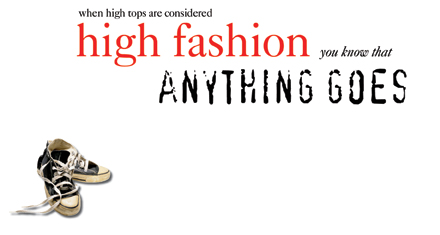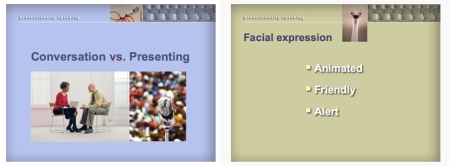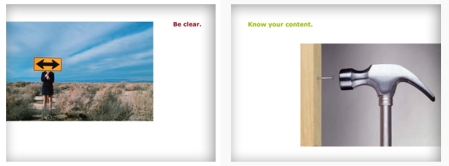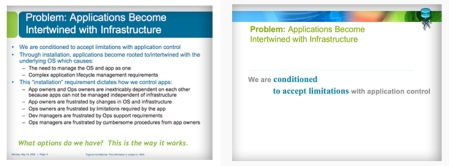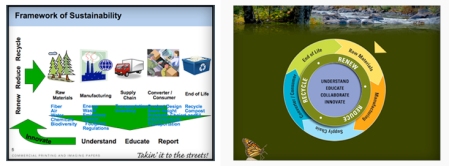What Lies Beneath The Marketing of a Presidential Candidate
This presidential race has probably been the most dynamic in my lifetime. All the big stuff is on the table, and everything is important, globally and nationally. Our economy is disastrous, and the atmosphere in America is stressed, pulling between hopefulness and optimism, anger, fear and frustration. Most of us are just trying to live our lives, trying to make sense of the world while going to work, tending our families, paying ever-rising bills; maybe even hoping to make something of ourselves – and right now, hoping we vote in a new leader who will keep our country safe and prosperous, whom we can stand behind with honor; hoping we vote in new leader who will stand honorably behind us.
Also within that stressed climate is this great sense of division. The “left” and the “right”. This divide is killing us. In some circles, depending on whom you support for president, conversation is impossible. I would like to see conversation remain open and lively, not stilled by angry zealots OR by a government that feels it knows how to run our lives better than we do. I’ll leave it at that for now – suffice to say, it’s disturbing. That we need change is true. It’s the direction of that change that concerns me most.
Advocating “change”, along comes Obama. Undeniaby charismatic. Well-spoken, intelligent, strong. An appeal that’s very easy to understand. I like Obama’s sense of confidence, his steady, unflappable-ness. He has spoken about the divisions amongst us, the yearning for change – and one could imagine he might inspire a great surge of coming together, an upliftment to a sagging national spirit, a feeling-good about a strong, united USA. He’s that compelling and that likeable. But what he’s proposing, behind his engaging eloquence, does not speak to me of an uplifted, healthy America.
Here’s the thing. I’m a little nervous. It started with Obama’s beautifully produced “we can change” video several months back. I watched it and thought, wow – this is very cool, very powerful – and seen from the perspective of my designer eyes, some very slick marketing. The initial wow factor I’d felt was instantly replaced with a little distrust. In this age of marketing, packaging is everything. It’s all about branding (I know a thing or two about that), and Obama’s video was a well done, prime example. It was smart, attractive and clever. It was catchy – a simple message, repeated over and over in an engaging way. From a marketing standpoint it hit its mark. It got people’s attention, it reached its audience. I’d give it an A. But once you got past the rich production, the message felt very, well, elementary. …Change. Okay, what else? Change is essential, but change is also inevitable. We’re going to get change no matter who wins the election.
Still, I followed the race with an open mind, and continued to be impressed by Obama’s style. Maybe it’s an idealism I felt akin to. Or was I responding to the marketing of Obama? Or was it his speech-giving skills so blatantly superior to McCain’s (who is far more public servant than great orator). I wanted to know the meat behind his delivery, and the more I listened, I found my concerns growing. One concern being Obama’s lack of governing experience. That he has strong leadership qualities I don’t argue, but I believe he’s very naïve on foreign affairs, which is a lack I find discomforting. Should he be elected, hopefully he’ll have the good sense to surround himself with seriously experienced, savvy, knowledgeable people. And when it comes to his economic plans … I shudder. I shudder, not because there might be “change” – but because the change Obama speaks of does not, to me, reflect any sense of “the American dream”.
Millions of people have immigrated to the U.S. over the past few hundred years. They still flock here in droves, often risking their lives in the process. Sometimes to escape a life of horror or drudgery elsewhere, sometimes it’s to fulfill larger dreams. It’s always to be able to create a better life. It’s always about freedom. This is the land of opportunity, where you can arrive in rags and earn your way to riches. Come to think of it, “earn” is the key phrase there. Except for the elite few, success isn’t handed to anyone. (And even those born with a silver spoon in their mouths can fail.)
I think it’s worthwhile mentioning at this point that the term “riches” does not equal greed. That greed exists, is a cold reality of the ages. But having wealth, in and of itself, does not make someone bad. In fact, many of the wealthiest individuals and businesses in our country are the most generous. Organizations largely dependent on charity – like health and scientific research, public television and radio, educational advances, the list goes on – would suffer without the contributions and sizeable financial gifts from wealthy factions.
That all said, as I understand the basics of Obama’s economic strategy – tax breaks (which could mean any number of things…) would be given to anyone earning under $250,000 a year, and that every individual and business earning over that amount would be responsible to pay more tax then they currently do, to basically carry those who are less fortunate. The idea being that those who “have” should take care of those who “have not”. This might sound like a lovely concept, kind of like family taking care of one another. (And I would hope that we are a compassionate enough people to take care of those truly in need, which I feel is distinctly different from those who choose not to participate.) But there is a huge conceptual flaw as far as I’m concerned, and I feel it’s a damaging one. That flaw is that this is the government, not your family, and this tax plan penalizes people who do well, who’ve worked hard and earned their way to a certain level of stability, while at the same fostering a sense of entitlement and discouraging self-reliance and self-discipline.
I believe that most of us have been raised (whether directly or indirectly, and from whatever economic means we come from) to do our best, to be the best we can be, to use our abilities and achieve something for the betterment of ourselves, our families and our societies. Maybe even the world, if you’re so inclined. Now I hope upon hope that this is not the case, but it seems that a government under Barack Obama all but suggests abandoning any personal dreams of greatness and be content to be one of the flock. Because if you dream big, you might make it big, and then you will, in a sense, be punished. Punishment in the form of no longer having the choice to share your wealth, but being required to do so, and used at the government’s discretion. And on the other hand, if you do the bare minimum you will be rewarded by receiving money, via the government, from a neighbor who has fared better than you have. In my view, this can lead to, and possibly accomplish, an encouragement of mediocrity. And mediocrity is not the stuff of greatness.
Do the majority of Americans really look around and say, hmmm, I want what that person has, so I think they should share it with me? If this is true, then our country is truly becoming sadly and fundamentally troubled. I don’t think this is the case… but marketing can be a powerful tool, with a root interest in convincing people of some need, want, situation or belief. I think we should always be mindful of what we are presented with. And some of what I hear from Obama, though elegantly wrapped, feels like I’m being fed something my gut doesn’t like.
The best US stories are about those who came from nothing and made something of themselves through hard work, grit, passion and commitment. Some have even achieved greatness. Not necessarily a greatness measured by the size of a bank account, but by the elevation of themselves or those around them, whether it be through their minds, their hands, or their hearts. And while not measured by bank accounts, degrees of financial reward often follow. Reward for services rendered as a result of that hard work and commitment. The freedom to attain prosperity and financial stability – this is part of the American Dream, is it not?
And should it be your choice on how your financial reward is used, or should it be up to the White House? Does the government make you a better person by enforcing wealth-distribution? That kind of scenario is not freedom. It is control.
So, why this hard line of delineation proposed by Obama, which further exaggerates a “haves and have-nots” mentality? Instead of expecting Jack to pay for Joe, why not the simple method of contributing tax percentages based on our income levels, which in effect balances our tax input. (For those who do resent other’s prosperity, be comforted knowing that the wealthy already pay the bulk of taxes.) And hand in hand with taxes of any kind, the government needs to be accountable and more responsible with how it spends our money.
Instead of “re-distributing the wealth”, how about putting the focus on continuing to provide opportunity for excellent education and encouraging a social environment conducive to innovative thinking, personal growth and the possibility for all the citizens of the United States to excel, to achieve the American dream, to freely pursue life, liberty and happiness.
I think it’s right to encourage everyone’s best. Let them reach for the stars without Uncle Sam telling them what to do with their success.



